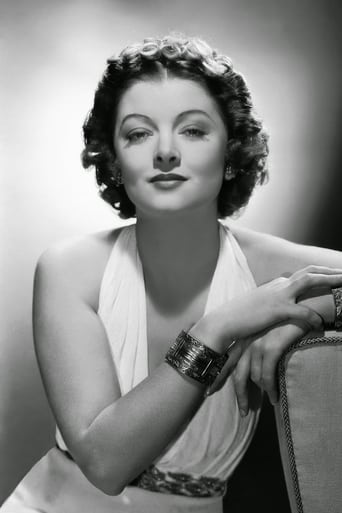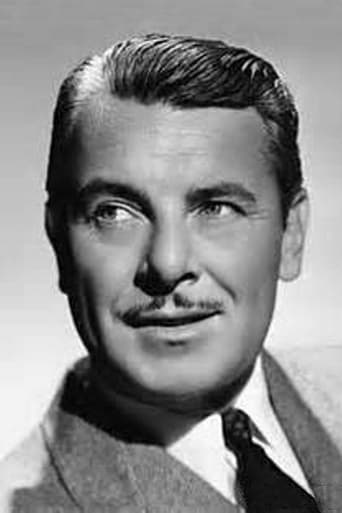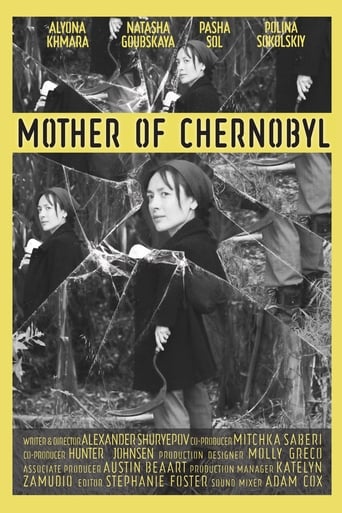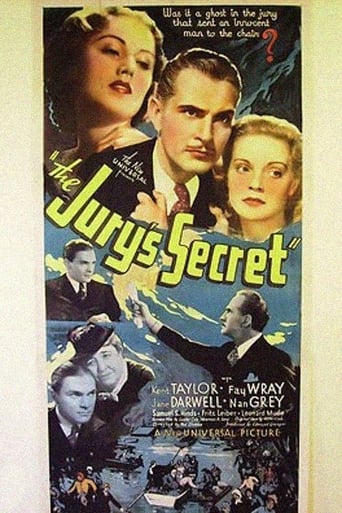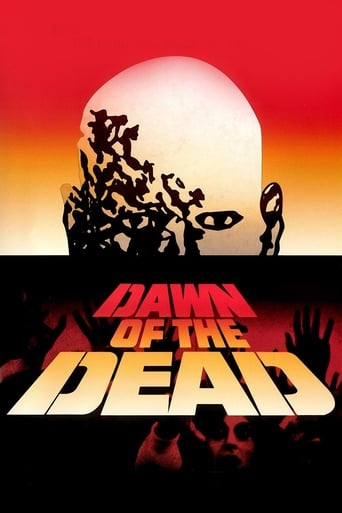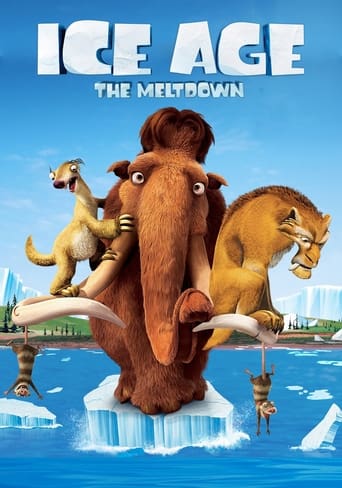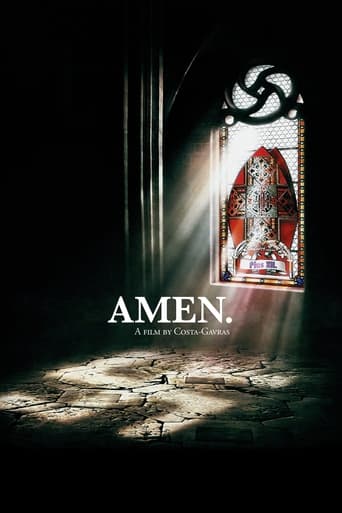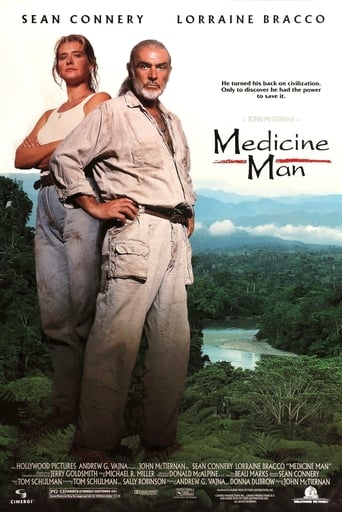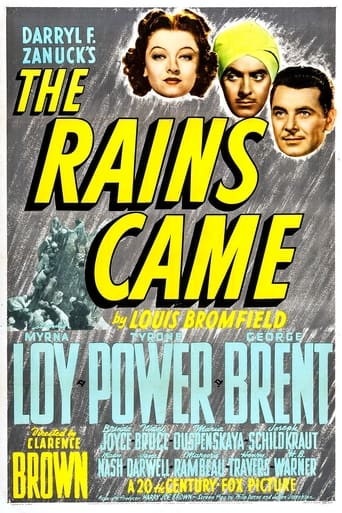
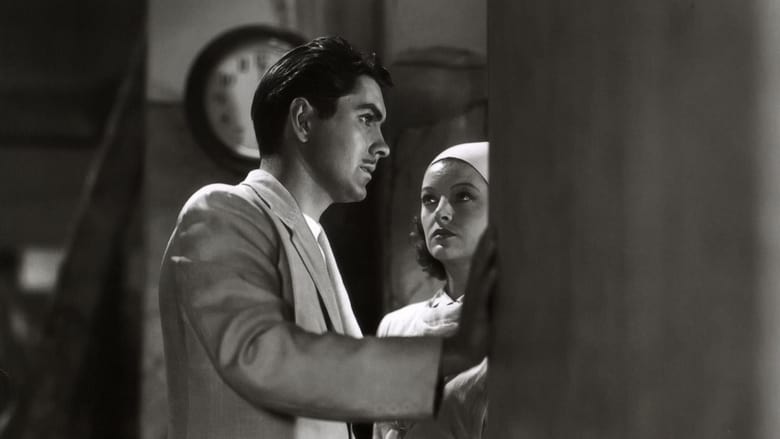
The Rains Came (1939)
Indian aristocrat Rama Safti returns from medical training in the U.S. to give his life to the poor folk of Ranchipur. Lady Edwina and her drunken artist ex-lover Tom Ransome get in the way, but everyone shapes up when faced by earthquake, flooding, and plague.
Watch Trailer
Cast
Similar titles
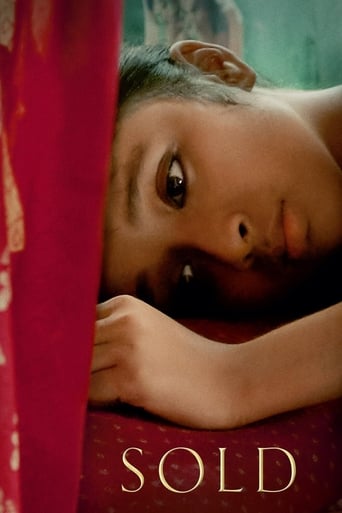
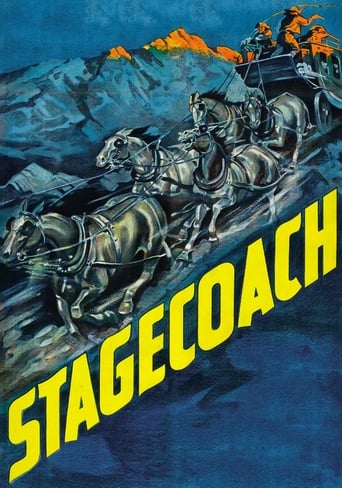

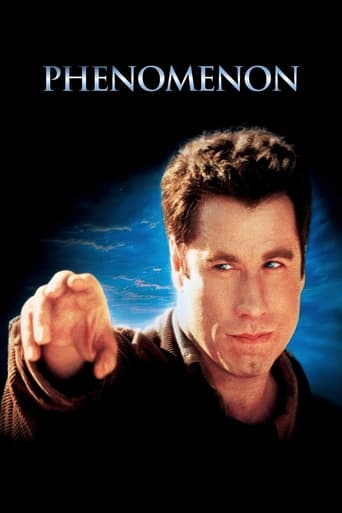
Reviews
Yo, there's no way for me to review this film without saying, take your *insert ethnicity + "ass" here* to see this film,like now. You have to see it in order to know what you're really messing with.
This is a must-see and one of the best documentaries - and films - of this year.
Although I seem to have had higher expectations than I thought, the movie is super entertaining.
Like the great film, it's made with a great deal of visible affection both in front of and behind the camera.
The Rains Came (1939)At first I thought this was a post-war movie, which would make it a post-Independence movie for India from the British. And since the story starts in 1938, the events would seem to lead to that huge turnover, told Hollywood style. That was fine with me.But no, and even better. Instead we have a pure drama that happens to be set in troubled India. World War II isn't even a fact for the film or the filmmakers, so the colonial feeling is quite sincere, and easy to poke a little fun at. In fact, the movie begins by making clear the snobbery of the British ruling elite, the women who want only the finest friends and the men who want only their frivolous jobs. The natives, the Indians themselves, have only a small presence, and the two Indian leaders are played by non-Indians, as was unfortunately usual for Hollywood at the time.The drama starts slowly, and even when Myrna Loy finally appears (and she is terrific enough to make an instant difference) the actual story still winds its slow way along. George Brent as the leading man always colors a film because he's easy going and likable to the point of calmness, which can easily become dullness. Still, he's rock steady and I like him. And Tyrone Power, who as the devastating good looks to upend things, is kept in a reserved and steady role, too, playing an Indian doctor with clearly British training. There is a fourth main character, more of a cliché of sorts but important to the story, an overly young blonde and naive girl just over eighteen who wants Brent in every way. And seems by the middle flood scenes to get him where he is best got.Yes, this is a love melodrama set in steamy, rainy, exotic India. As a drama it's good, though lacking some kind of drive to make it chilling or weepy or whatever might send it over the top. But there are aspects here that are really exceptional. One of them is the stunning job on the earthquake and flood scenes. Special effects being completely physical back then, it's astonishing how realistic it all is. There is some back projection, but no retouching or double exposure that I could see, and no computer graphics of course, just elaborate models and slow motion to fool you about the scale of everything. But beyond the feat of pulling it off is just the aesthetic handling of movement and space as the world crumbles, literally.The scenes that follow the devastation are in flood stage with continuing rain, and it's pretty good stuff. And of course there's something of a metaphor to it all, the outsiders (mostly British, but some Americans, who of course don't have quite the same classist attitudes) feel just how outside they are. There is always, for them, the possibility to just leave, and a few no doubt do, but mostly people knuckle down and help with the disaster relief. Loy has been bored and spoiled until now, and she helps at the hospital, partly to be with the searing doctor. And Brent ends up helping, too (which we expect--he's a good guy) and his young hanger-on sticks to his side, maturing quickly."The English are an odd people," the Indian maharani says, and nothing is more true. There they are, these colonialists, sticking it out through really awful times, helping and and suffering equally. Yes, they have pampered lives compared to the common person there, but it's no picnic, the heat and disease and hardship. Toward the end Brent persuades Power to rise up from his sadness. You were "...born in the darkness and filth that was India. You are India. A new India!" This is a movie about rising up in general, being better, forgetting differences and also forgetting selfishness.The director Clarence Brown has a handful of really terrific films in his career, and this one shows why--it's subtle and beautiful and also a bit epic in its own way. It's also gorgeously filmed, from the devastation to the smallest intimacies, all under the eye of Arthur Miller, a legend in cinematography already, and with some classics to come as well. Although meant to be filmed without flashy distraction, it's handled with enormous grace and depth. It's classy and classic stuff. And the music is typically dramatic and scored to follow the action by another great, Alfred Newman.The chilling and beautiful opening titles that melt off each page in a dripping wash give a clue of what is to follow, with an ominousness latent throughout. Then, toward the end, after surviving catastrophe, a simple mistake, and a realization that time is short, and the drama becomes a weepy tragedy. It doesn't get any better than that!
I probably should not be commenting on this movie, as I have not seen it yet. I have, however, read the novel on which the film is based, and I have downloaded and listened to the "Lux Presents Hollywood" radio version of the story. I will admit that does not make my comments acceptable until I see the film.Several people have commented that Tyrone Power does not have an Indian accent. But Major Safti went to college and studied medicine. To do that, at that time, he would have to leave India and study in England. Hence, his English would be much better than those who only learned their English in Ranchipor.About Lady Edwina drinking from the cholera glass: In the novel, she is working the night shift. She checks her patients, gives them water, covers them, etc. She sits down exhausted and pours herself a drink of water. After she drinks, she notices that a patient is staring at her horrified. It is then that she realizes that she has drunk from the glass reserved for the cholera patients. She brushes it aside, but a day or so later comes down with the disease. I see that TCM will be showing this film next week. I will watch it and make further comments.Spin
Grand Hollywood melodrama! Love relationships in India hold tightly despite the country being ravaged by earthquakes and floods. Ostensibly a production molded around the advancement of special visual effects circa 1939, all kinds of state-of-the-art trickery is employed: buildings crumble and the earth splits apart in hair-raising fashion. Predictably, the characters offer less interest, although George Brent does excellent work as an older man accepting the affections of a dewy-eyed nymph (this is possibly the best performance I've seen from Brent) and Myrna Loy is also very good as a socialite in love with a native. Flawed overall, yet an entertaining show. Remade in 1955 as "The Rains of Ranchipur". *** from ****
In some made-up Indian province in 1938 we have a dissolute artist (Brent, who couldn't carry a picture to save his life), an up-and-coming doctor (Tyrone Powers in normal slick mode; he was that era's Tom Cruise), Brenda Joyce as a naive missionary's daughter (pretty, but unremarkable) and Myrna Loy as what they used to call "an adventuress". They're all having soap opera style problems until the middle of the picture, when monsoon rains come and wreck the province.Big budget for the time, but mostly pretty sleepy. The acting is unremarkable throughout: Brent is stiff and awful and unfortunately the lead, Powers is not that convincing as an idealistic doctor -- he'd have made a good dissolute guy, though. And while Loy in general is fine, nobody wants to see her in hospital scrubs picking up operating room waste. The two best performances are supporting ones, Nigel Bruce as Loy's older pain of a husband, and Ouspensky as the queen of the province -- though you have to get past her Yiddish accent.The story's over-drawn out, with some really bad speeches here and there and some extraordinarily tedious moments. The best part of the movie, and what it's probably most remembered for nowadays, is the special effects halfway through, all of which are very impressive. The movie picks up dramatically in those sections, before settling back down to sleepiness.RAINS is sort of an early Hollywood disaster picture: it's interesting to see that while nowadays a disaster picture is conceived as a kind of action movie, in the thirties it was more a subset of the soap opera. If you happen to catch it on television, it's worth seeing for the special effects, but other than that I'd pass.
